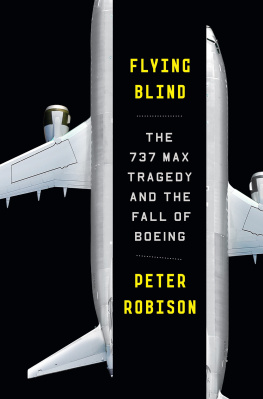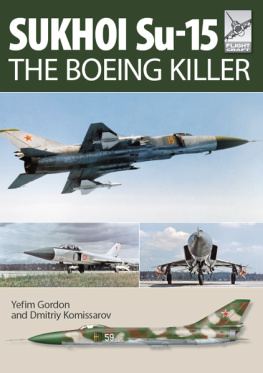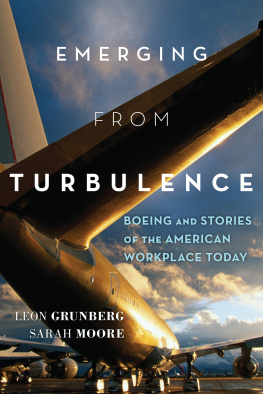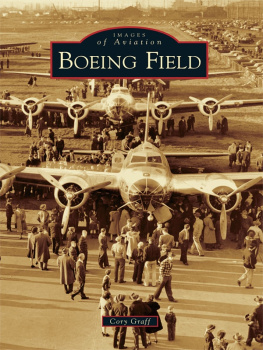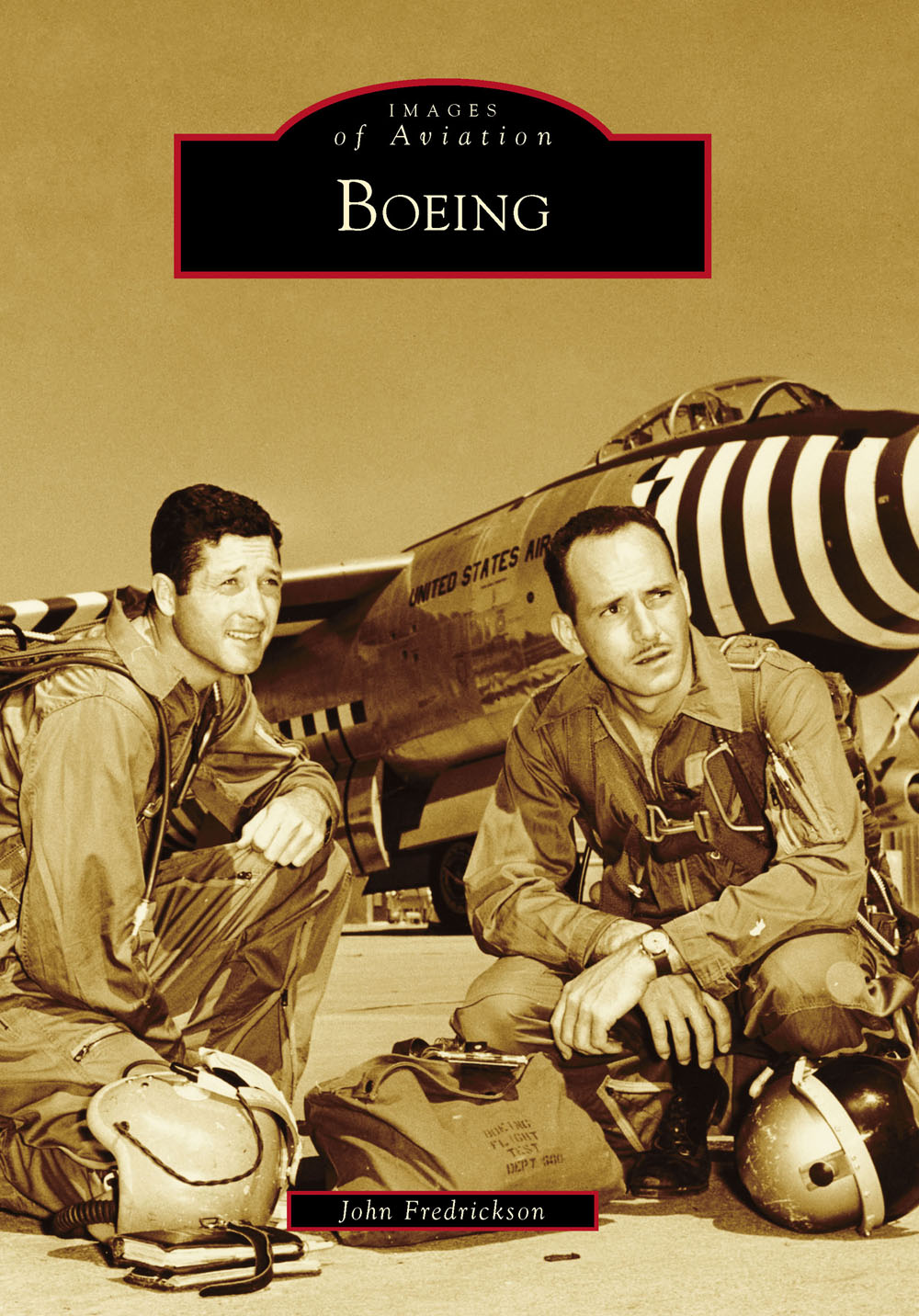
IMAGES
of America
BOEING

William E. Boeing frequently sailed the sheltered inland waters of the Pacific Northwest aboard his beloved yacht Taconite. On September 28, 1956, the crew docked at the Seattle Yacht Club in a state of alarm. Boeing, just days shy of his 75th birthday, was declared dead on arrivalthe victim of an apparent heart attack. In accordance with his wishes, the remains were cremated, and the ashes were scattered in pristine Canadian coastal waters, where he loved to cruise, relax, and fish for salmon. The Boeing Company separately operates a yacht called Daedalus for business entertainment. (Courtesy of the Boeing Historical Archives.)
ON THE COVER: Boeing pilots Richard Dick Taylor (left) and Jack Funk are working on bomb-tossing tests at Wichita. Taylor (19212015) was a World War II pilot who was later director of engineering during Model 737 development. Some historians consider the B-47 Stratojet to be the most important Boeing design because it was the first to incorporate the innovations of pod-mounted jet engines hung beneath a swept wing. This configuration is the hallmark of the many thousands of Boeing jets that followed. According to a news item from February 8, 1949, The Model 450-3-3 (XB-47) jet bomber sets a transcontinental speed record from Larson AFB to Andrews AFB, Maryland covering 2,289 miles in 3 hours and 46 minutes. The B-47 went on to establish other records for speed over distance. (Courtesy of the Boeing Historical Archives.)
IMAGES
of America
BOEING
John Fredrickson

Copyright 2016 by John Fredrickson
ISBN 978-1-4671-1699-2
Ebook ISBN 9781439656655
Published by Arcadia Publishing
Charleston, South Carolina
Library of Congress Control Number: 2016903346
For all general information, please contact Arcadia Publishing:
Telephone 843-853-2070
Fax 843-853-0044
E-mail
For customer service and orders:
Toll-Free 1-888-313-2665
Visit us on the Internet at www.arcadiapublishing.com
This book is dedicated to the managers who most favorably influenced my 36 years at Boeing: Norman E. Jepsky (flight test), Stewart S. Berry (international traffic), Richard G. Miller (finance operations), and Allyn J. Murphy (employee services). They demonstrated vision, compassion, drive, social savvy, intelligence, and competence, all of which are expected at Boeing. They delivered the infrastructure necessary for the brilliant engineers, dedicated assembly mechanics, and other technical geniuses to create and deliver amazing products..
CONTENTS
ACKNOWLEDGMENTS
The generous assistance and cooperation of Michael Lombardi and Thomas Lubbesmeyer of the Boeing Historical Archives in Bellevue, Washington, was invaluable to the creation of this book. Our focus is on William E. Boeing, the company he founded, and a sampling of its products. The book offers a traditional (i.e., pre-merger) view of Boeing operations and products.
The designations for airplanes can be confusing. Boeing products are assigned a model number for internal purposes. Designs intended for military use are given a separate identifier by the owning service. Up until the late 1950s, the Navy and Air Force applied inconsistent designations to the same product. For example, Model 314 (Pan American Clipper) became the C-98 when commandeered by the Army (five airframes), while the Navy called it B-314 (four airframes).
Airlines generally observe the Boeing model designation. Model 747-100 was the worlds first jumbo jet in 1970. Digits after the model number represent major design improvements, as when the 747-400 was superseded by the 747-8, which first flew in 2010. Freighters are airplanes with oversized cargo doors, no passenger seats, and sometimes no fuselage windows (e.g., 747F).
Narratives labeled as a news item were taken verbatim from the Boeing Log Book 19161991 (Boeing Historical Archives, 1991) and are representative of the associated image; however, the photograph may not in every case depict the actual news item event as dated and/or described.
Unless otherwise noted, all photographs and graphics derive from the Boeing Historical Archives and are used with permission. Copyright resides with the Boeing Company. This publication has not been prepared, approved, or licensed by the Boeing Company.
INTRODUCTION
Whats in a name? Wilhelm was the father of William E. Boeing and one of the many thousands of German immigrants who poured into the United States during the 1800s in search of a better life. Wilhelm arrived in America with the German surname of Bing, with an umlaut over the letter o; however, he changed the spelling to Boeing upon discovering there were no umlauts in the English character set. The name turned out to be ideal for an airplane company: it was short, distinctive, and a moniker rarely found in the phone book.
Best of all, it was bereft of negative connotations in every major language. For example, Bing, the Microsoft search engine, translates to illness in parts of China, and that hurts usage. There are also a number of food-related instances.
The Boeing Company has been viable for a century. The aerospace industry is akin to a roller coaster. Periods of expansion (boom) are too often followed by sudden contraction (bust). The long-standing involvement in both commercial and military programs mitigates that cycle by facilitating the transfer of not only skilled people but also emerging technology between product lines. The corporation thrives in the global marketplace by offering a mix of cutting-edge airliners, military programs, feats in space, and other aviation services.
After some serious stumbles in recent decades, the business prognosis at Boeing is robusta condition consistent with the ambitions, innovation, business acumen, and straight-arrow decency of the founder. Lets meet the aviation visionary who in 1929 said, They will someday regard airplane travel to be as commonplace and incidental as train travel.
Born on October 1, 1881, William Edward Boeing was the only son of a self-made German immigrant. Wilhelm Boeing earned his wealth in iron ore and timber but died of influenza when young William was a mere eight years of age. His mother, the former Marie Ortmann, endowed with a generous inheritance, ensured their son would receive the best education, which included boarding school in Switzerland, followed by three years at Yale.
The self-motivated Boeing, driven to emulate the financial success of his father, relocated from Virginia to rain-soaked western Washington while still in his 20s in search of his own fortune as a timber baron. A nationwide construction boom then under way stimulated the demand for lumber, and William Bill Boeing prospered, but life in the small coastal logging town of Hoquiam soon became mundane.
The search for excitement triggered a move to the nearby city of Seattle, where Boeing became smitten with airplanes and flying. The tall man with a mustache had the aura of an aspiring college professor with owlish eyeglasses, polished vocabulary, and carefully chosen words. Like other businessmen of that era, Boeing was most frequently photographed wearing suits and ties while stiffly posed; however, some images show him in flying attire.
The interwar period (roughly 1919 to 1937) was not only a time of complicated and dynamic business relationships but also a period of rapid innovation within the still adolescent business of aviation. Boeing chided his engineers: Let no improvement in flying and flying equipment pass us by. Improved technology made its way back and forth between civil and military designs. Airframe materials shifted from wood and cloth to metal. A single cantilevered wing replaced bi-wings, wires, and braces. Engines became more powerful, and their reliability improved.
Next page



